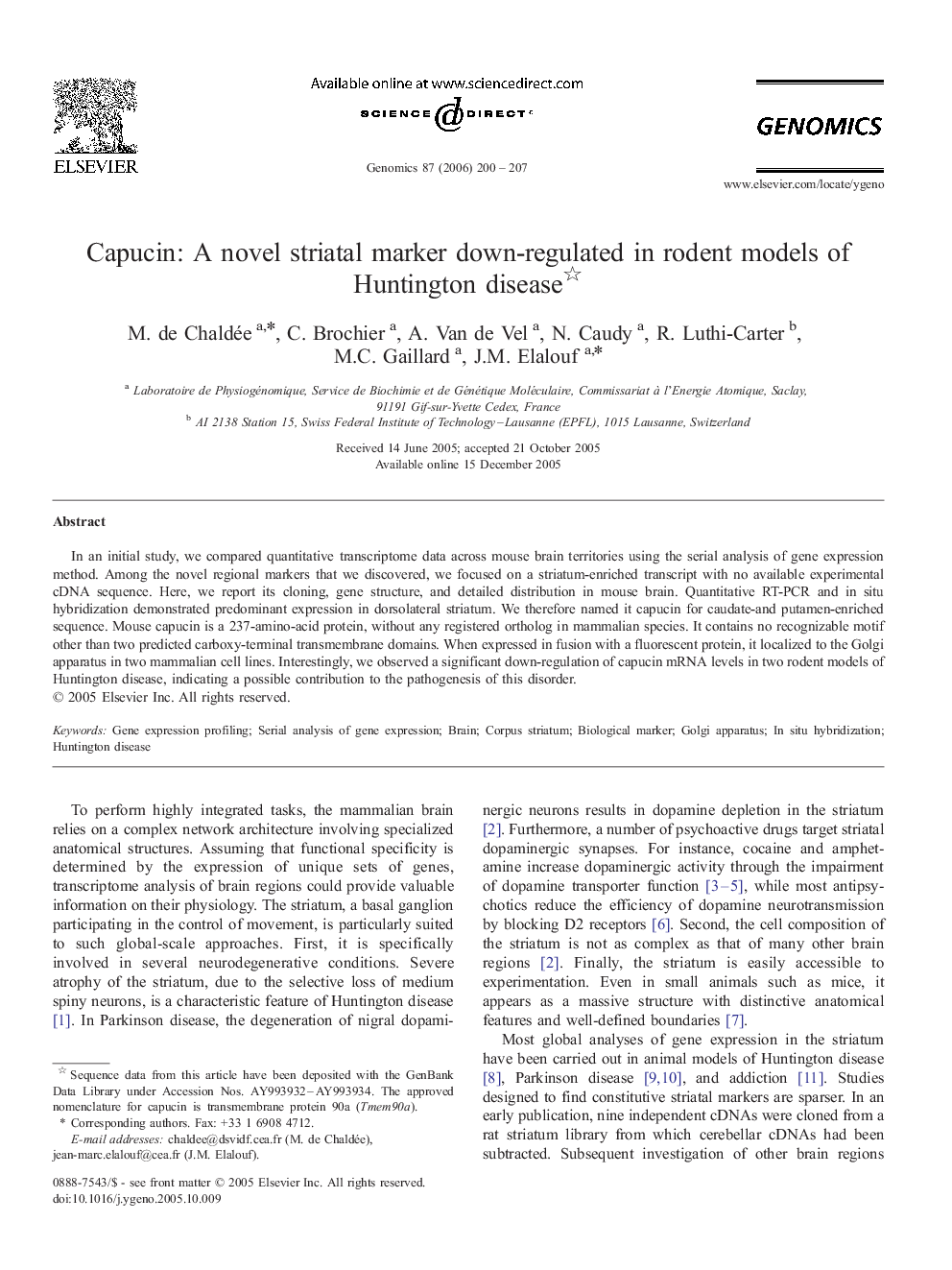| Article ID | Journal | Published Year | Pages | File Type |
|---|---|---|---|---|
| 2821756 | Genomics | 2006 | 8 Pages |
In an initial study, we compared quantitative transcriptome data across mouse brain territories using the serial analysis of gene expression method. Among the novel regional markers that we discovered, we focused on a striatum-enriched transcript with no available experimental cDNA sequence. Here, we report its cloning, gene structure, and detailed distribution in mouse brain. Quantitative RT-PCR and in situ hybridization demonstrated predominant expression in dorsolateral striatum. We therefore named it capucin for caudate-and putamen-enriched sequence. Mouse capucin is a 237-amino-acid protein, without any registered ortholog in mammalian species. It contains no recognizable motif other than two predicted carboxy-terminal transmembrane domains. When expressed in fusion with a fluorescent protein, it localized to the Golgi apparatus in two mammalian cell lines. Interestingly, we observed a significant down-regulation of capucin mRNA levels in two rodent models of Huntington disease, indicating a possible contribution to the pathogenesis of this disorder.
